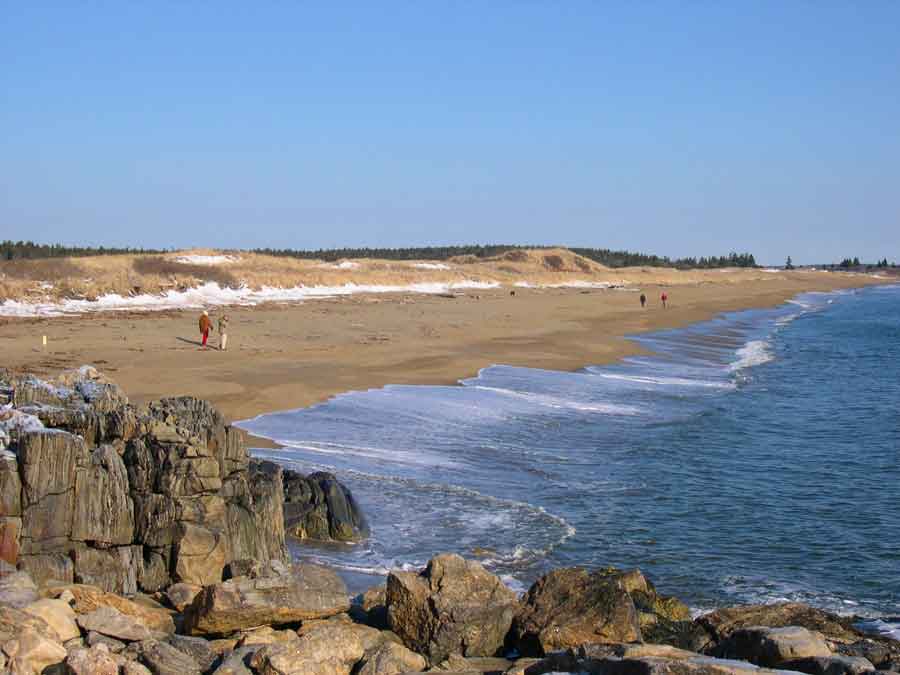Reid State Park

Reid State Park, like Popham Beach State Park to the southwest, is often crowded in summer. It is best birded in the off-season and at high tide. The water is deep close to shore, so diving ducks approach the beach for easy viewing. It’s an ideal spot to watch for grebes in the winter. Large rafts of Red-necked Grebes often float together, while more solitary Horned Grebes are peppered throughout the ocean. Long-tailed Ducks also draw close to shore. Rafts of Common Eiders sometimes harbor a King Eider.
Like most of Maine’s sandy beaches, a southeastern exposure allows the shoreline to escape the punishing erosion of prevailing winds and major storms, and it creates a warmer microclimate. Sanderlings may be found even in January. Wintering Purple Sandpipers are common on the rocks at both ends of the beach and sometimes forage on the beach like Sanderlings, an unusual behavior for this species.
Surf Scoters are the most common, but Black and White-winged Scoters may also be present. Red-breasted Mergansers and Black Guillemots are usually around. This is northernmost large sand beach along the Atlantic coast until well into Canada and the last protected breeding area for endangered Piping Plovers and Least Terns.
A typical outing begins with a quick peek into the tidal lagoon where the entry bridge crosses into the parking lot. Look for dabbling ducks in migration and American Black Ducks at any time. Smaller diving ducks, such as Buffleheads and Red-breasted Mergansers, regularly feed in its shelter.
Next, ascend Griffith Head. The entire expanse of Mile Beach and ocean is visible from here. Stroll the beach at least as far as Todd’s Point on the opposite end. Beyond it lie Half Mile Beach and the mouth of Little River. There is a picnic area atop Todd’s Point and the road that serves it is squeezed between the tidal lagoon and wetlands. This access road is frequently used to make a loop out of the beach trip, returning to the entrance gate through an area that is good for songbirds.
Horned Larks, Snow Buntings and the occasional Lapland Longspur are possible from late September through March around the dunes and beach edges. A few hardy Yellow-rumped Warblers may linger in milder winters. When present, Northern Shrikes are easy to spot, perching high on the spindly tops of shrubs and trees. In summer, Nelson’s Sparrows nest in small numbers in the salt marsh fed by the Little River. Look carefully for any dabbling ducks in the river on the far side of the service road. Canada Geese are usually present if the water isn’t frozen.
Where the service road passes through woods, as it does just after the entrance gate and before Todd’s Point, the habitat is significantly coniferous. Golden-crowned Kinglets are always present. Ruby-crowned Kinglets are common in summer. Brown Creepers are likely in any season, and crossbills are possible in heavy cone years.
Directions: From Woolwich (on the east side of the Kennebec River from Bath) take Route 127 south through Arrowsic and Georgetown 10.7 miles to the right turn toward the park. Follow to the gate.
Georgetown Island
Georgetown, ME 04548
Georgetown, ME 04548
Maine Birding Trail Guidebook p48-49.
GPS: 43.787681, -69.723509